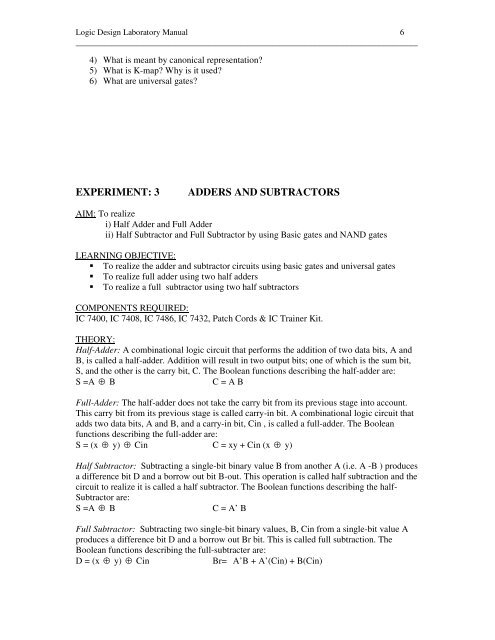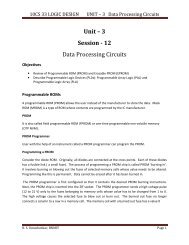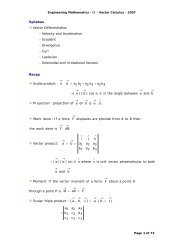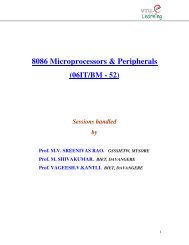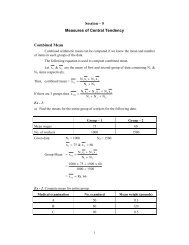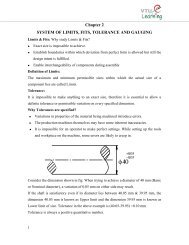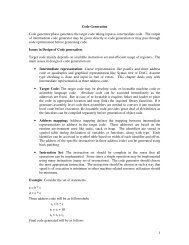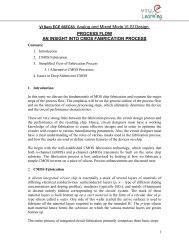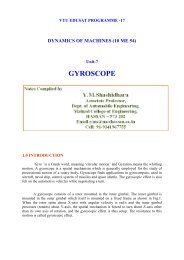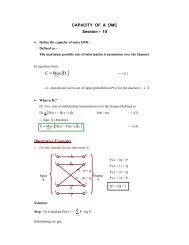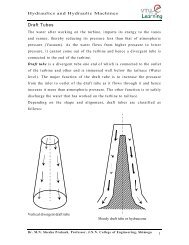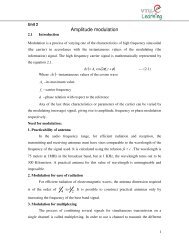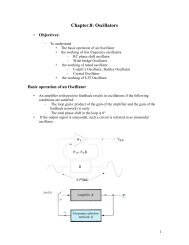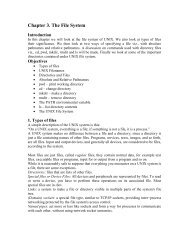LOGIC DESIGN LABORATORY MANUAL - VTU e-Learning Centre
LOGIC DESIGN LABORATORY MANUAL - VTU e-Learning Centre
LOGIC DESIGN LABORATORY MANUAL - VTU e-Learning Centre
You also want an ePaper? Increase the reach of your titles
YUMPU automatically turns print PDFs into web optimized ePapers that Google loves.
Logic Design Laboratory Manual 6<br />
___________________________________________________________________________<br />
4) What is meant by canonical representation?<br />
5) What is K-map? Why is it used?<br />
6) What are universal gates?<br />
EXPERIMENT: 3<br />
ADDERS AND SUBTRACTORS<br />
AIM: To realize<br />
i) Half Adder and Full Adder<br />
ii) Half Subtractor and Full Subtractor by using Basic gates and NAND gates<br />
LEARNING OBJECTIVE:<br />
To realize the adder and subtractor circuits using basic gates and universal gates<br />
To realize full adder using two half adders<br />
To realize a full subtractor using two half subtractors<br />
COMPONENTS REQUIRED:<br />
IC 7400, IC 7408, IC 7486, IC 7432, Patch Cords & IC Trainer Kit.<br />
THEORY:<br />
Half-Adder: A combinational logic circuit that performs the addition of two data bits, A and<br />
B, is called a half-adder. Addition will result in two output bits; one of which is the sum bit,<br />
S, and the other is the carry bit, C. The Boolean functions describing the half-adder are:<br />
S =A ⊕ B<br />
C = A B<br />
Full-Adder: The half-adder does not take the carry bit from its previous stage into account.<br />
This carry bit from its previous stage is called carry-in bit. A combinational logic circuit that<br />
adds two data bits, A and B, and a carry-in bit, Cin , is called a full-adder. The Boolean<br />
functions describing the full-adder are:<br />
S = (x ⊕ y) ⊕ Cin C = xy + Cin (x ⊕ y)<br />
Half Subtractor: Subtracting a single-bit binary value B from another A (i.e. A -B ) produces<br />
a difference bit D and a borrow out bit B-out. This operation is called half subtraction and the<br />
circuit to realize it is called a half subtractor. The Boolean functions describing the half-<br />
Subtractor are:<br />
S =A ⊕ B<br />
C = A’ B<br />
Full Subtractor: Subtracting two single-bit binary values, B, Cin from a single-bit value A<br />
produces a difference bit D and a borrow out Br bit. This is called full subtraction. The<br />
Boolean functions describing the full-subtracter are:<br />
D = (x ⊕ y) ⊕ Cin<br />
Br= A’B + A’(Cin) + B(Cin)


